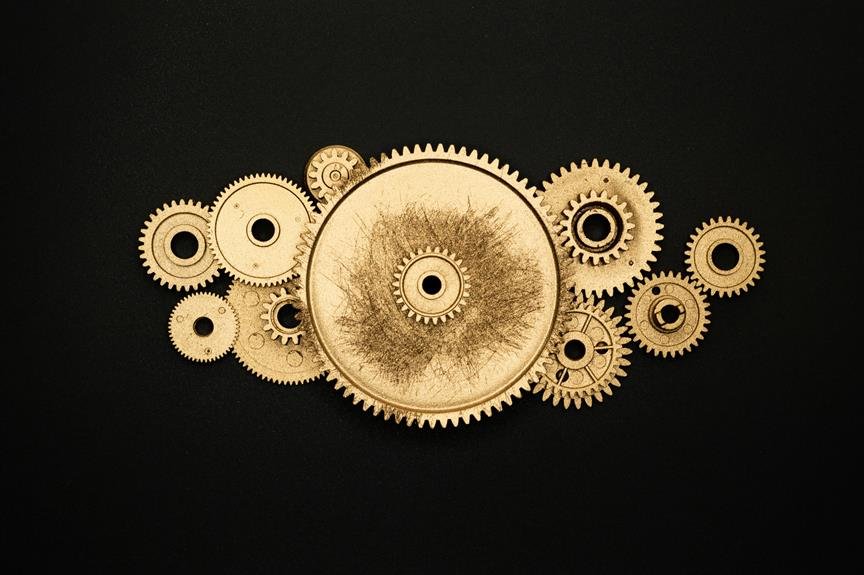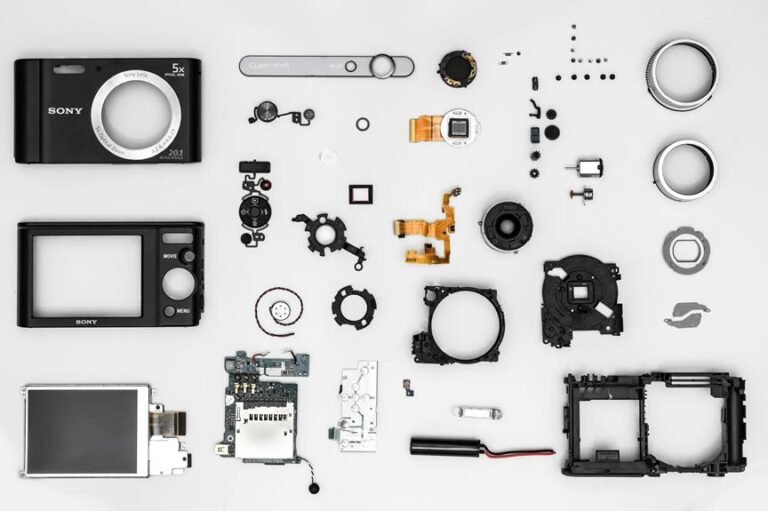How Do 360 Cameras Work? Unveiling 360 Camera Mechanics
360 cameras operate by integrating dual or multiple lenses to capture distinct scene portions. Software algorithms align and blend frames seamlessly for cohesive panoramic images. Sensor technology guarantees full environmental coverage, capturing every angle with precision for immersive 360-degree viewing. Gyroscope and accelerometer systems enhance stabilization during image capture, providing smooth and accurate results. The integration of these components provides a thorough panoramic experience, allowing you to explore and interact with your surroundings in a spherical manner. Understanding how each element comes together reveals the mechanics behind the fascinating world of 360 cameras.
A Quick Overview
- Dual lenses capture specific portions for a complete 360-degree view.
- Software seamlessly stitches images together for immersive panoramas.
- Sensor fusion technology ensures full coverage and detailed representation.
- Gyroscope and accelerometer integration enhance stability and spatial awareness.
- Alignment, synchronization, and calibration are crucial for accurate panoramic imaging.
Understanding the 360 Camera Concept
To understand the essence of how 360 cameras function, one must explore the intricate world of panoramic imaging technology. These cameras find extensive applications in various fields, especially in virtual reality integration.
Dual or Multiple Lens Setup
In a dual or multiple lens setup, each lens captures a specific portion of the scene simultaneously, allowing for a complete 360-degree view to be created. Lens alignment is vital to guarantee that the images from each lens seamlessly blend together.
Image synchronization is essential for coordinating the data captured by each lens to create a cohesive panoramic image. These technical aspects work together to provide a thorough view of the surroundings.
Stitching Multiple Images Together
Stitching together multiple images captured by each lens in a 360 camera involves intricate software algorithms that meticulously align and blend the individual frames to seamlessly create a unified panoramic view.
Through precise image alignment and color correction, a smooth shift is achieved across the frames, ensuring artifact removal for a flawless panoramic experience.
This process is vital in delivering a cohesive and immersive 360-degree viewing experience.
Sensor Technology for Full Coverage
Utilizing advanced sensor technology, 360 cameras are designed to provide full coverage of the surroundings, capturing every angle with precision and accuracy.
Through sensor fusion, these cameras combine data from multiple sensors to create seamless panoramic photography.
This fusion allows for a cohesive and detailed representation of the environment, ensuring that no part of the scene is missed, resulting in immersive and thorough 360-degree images.
Gyroscope and Accelerometer Integration
Integrating gyroscope and accelerometer technology enhances the spatial awareness and stabilization capabilities of 360 cameras, ensuring smooth and accurate image capture.
By combining data from the gyroscope for orientation and the accelerometer for motion tracking, 360 cameras can precisely map movements in three dimensions.
Gyroscope calibration is essential for accurate tracking, while motion tracking algorithms use data from both sensors to provide seamless image stabilization and immersive experiences.
Real-Time Image Processing
To enhance the overall functionality of 360 cameras, real-time image processing plays a pivotal role in optimizing the quality of captured visuals.
- Image distortion correction guarantees seamless stitching of multiple camera feeds.
- Depth perception enhances the sense of dimensionality in captured images.
- Low light performance algorithms improve visibility in challenging lighting conditions.
- Motion tracking technology enables smooth and stable video recording.
Spherical Video and Photo Output
For achieving a seamless spherical video and photo output, the 360 camera utilizes advanced algorithms to capture and stitch together images from multiple lenses. These algorithms correct spherical distortion, ensuring a cohesive panoramic photography experience.
Immersive Viewing Experience
To enhance the overall viewing experience, the 360 camera seamlessly immerses users in a lifelike environment, offering a thorough panoramic perspective.
- Engage in interactive experiences, feeling like you're part of the scene.
- Immerse yourself in virtual reality worlds that seem incredibly real.
- Explore panoramic storytelling that surrounds you from every angle.
- Create enthralling 360 content that brings your audience into your world.
Frequently Asked Questions
How Does a 360 Camera Handle Low-Light Conditions?
In low-light conditions, your 360 camera enhances image quality through specialized night mode. This feature adjusts exposure settings and boosts sensor sensitivity to minimize noise, capturing clear and detailed images even when light is limited.
Can a 360 Camera Capture Sound in All Directions?
Yes, a 360 camera can capture sound in all directions, providing immersive sound quality. By utilizing surround sound technology and 360 capabilities, these cameras guarantee that audio complements the visual experience, enhancing overall immersion.
What Is the Maximum Storage Capacity Needed for 360 Content?
For 360 content, you need ample storage capacity due to high-resolution files. Compression techniques can help manage space efficiently. Opt for file formats like MP4 or MOV and establish a robust data management system.
Are There Any Limitations to the Range of Motion for 360 Cameras?
When capturing panoramic photography with 360 cameras, limitations in range of motion can affect the field of view. Camera stabilization is vital for smooth image stitching, ensuring seamless shifts between frames and maximizing the immersive experience for viewers.
How Does a 360 Camera Maintain Image Quality in Fast-Moving Scenes?
To maintain image quality in fast-moving scenes, a 360 camera utilizes advanced image stabilization technology that minimizes motion blur. This is achieved by adjusting the frame rate and shutter speed dynamically to capture crisp, clear footage.







